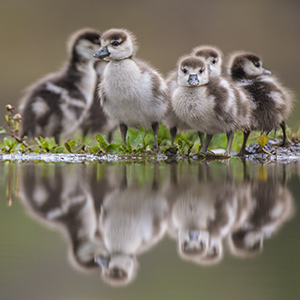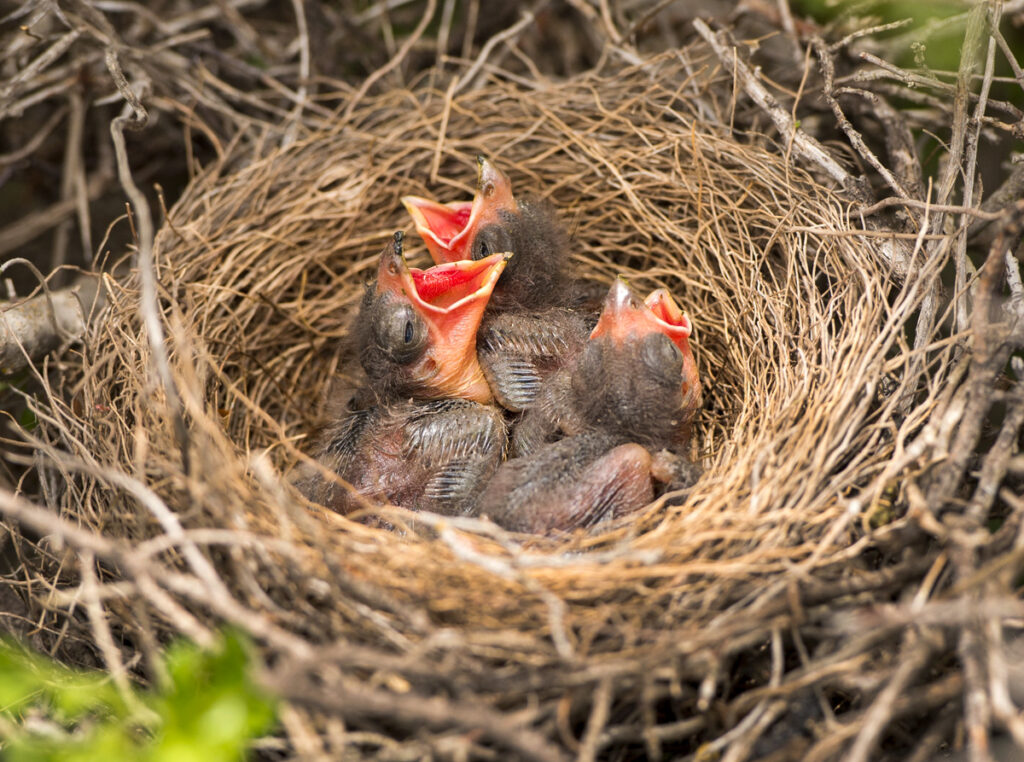
Spring is the season for all types of endearing baby animals, and a gently cheeping nest can be an irresistible photography subject. It is critical, however, that the safety and well-being of baby birds takes precedence over any photo, no matter how tempting it may be to get that perfect shot. Great baby bird photos are possible, however, without stressing or endangering the chicks or their watchful parents.

The Delicacy of Baby Birds
Baby birds are extraordinarily delicate, often lacking all their protective feathers and unable to feed themselves. The first few days of life are the most stressful when young birds are the most vulnerable and weak, needing constant attention and care from their parents. Fortunately, chicks do grow quickly and may reach mature size in just a few days, though it will take longer to sharpen their feeding and flying skills.
While it is appealing to get photos of young birds in these first few days of their amazing existence, any disruption to the parent birds’ activities or the area close to the nest can be devastating. If very young birds are left without care for several hours because the adults have become frightened, chicks may starve or die of exposure before their parents return. Slightly older chicks may become alarmed and could fall from the nest, injuring themselves or becoming vulnerable to predators.
Tips for Photographing Baby Birds
Because both nesting adults and baby birds are sensitive to disruption, it is critical that any photography be done thoughtfully and with extreme care to safeguard the birds. The easiest way to do this is to keep a good distance from the nest, using zoom lenses rather than risking a closer in-person approach. If the bird reacts to your presence in any way – a startled jump, freezing in place, flying away, or flying at you to discourage you – you are already too close.

If you want to get closer to nests without bothering the birds, consider a camouflaged shelter or blind that could be left in place, and you can return to it multiple times during the nesting season. Nearby birds can become accustomed to the shelter and may not be as sensitive to your hidden presence, but even such shelters should be used only with the greatest caution.
Any supplemental lighting or flash should also be avoided near nests. While birds’ nests are often built in more secluded, shaded spots where they won’t be easily seen, those shadows help protect the birds and hide them from predators. Not only can a flash expose the birds and put them at risk, but it is also possible that a strong light or flash may damage young birds’ delicate eyes and compromise their vision, particularly when their eyelids may not yet be developed enough to fully protect their eyes.

Similarly, excess noise should be avoided near any active nest to keep from stressing the birds. Turn off any unnecessary “click” sounds on cameras or other gear, and watch each footstep carefully to avoid breaking twigs, crunching leaves, or making other noises that could startle birds. Song recordings should never be used near a nest, as they can agitate adult birds and make it seem as if there is an intruder nearby, causing adults to leave the nest.
Visiting a nesting area frequently – with all the proper precautions – is a must during spring in order to get the best photos. Young birds mature quickly, some in a week or less, and the changes in their appearance and behavior can be dramatic from one day to the next. The more often you visit, the better you can document the birds’ growth and development, capturing those awkward “baby” and “teenager” moments before the young birds become indistinguishable from their parents later in the season.

Above all, it is best to always be mindful of nesting birds and treat them with as much respect as you would expect from any visitor to a maternity ward or nursery. Baby birds are truly charming creatures, and with care, you can capture charming photos of them without any risk to their safety or well-being.


